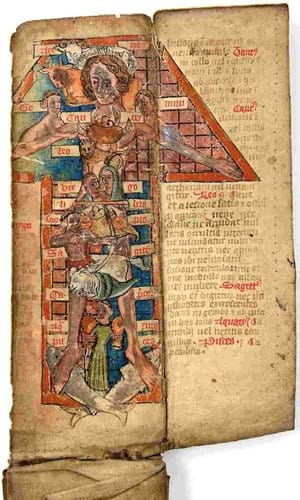
Part of a private family collection for generations and recently rediscovered in the back of a drawer, it drew international attention before selling to a phone bidder at the Leybrn auction on November 24.
As portable compendiums of calendrical, computational, medical and astrological material, these folding almanacs – also known as girdle books or physician’s calendars – provide an insight into the role of astrology in medieval medicine.
Intended for practical use by 15th century physicians, who used astrological calculations to establish prognoses and the most auspicious timings for medical interventions, their form allowed them to be suspended from the waist for quick reference.
The compression of this specific type of data into a portable format seems to have been an exclusively English phenomenon of the late 14th and 15th centuries.
Like others known (10 are in the British Library), this example comprises six vellum leaves stitched together at the foot with a silk-lined leather covering and an alum-tawed leather thong.
It is written in Latin in brown and red ink with accompanying polychrome illuminations including tables of solar and lunar eclipses and a large miniature of the Zodiac man. The prominence given to saints’ days and festivals associated with the Canterbury diocese suggests it was made in southern England for use in the Kent region, c.1425.

Details of the almanac showing the manuscript open and closed.
When Christie’s sold a similar manuscript for £100,000 in 2013, it was described as one of only two in private hands. It is now in the Wellcome Trust collection and can be viewed being opened and closed via a video online. It is similarly dated to c.1420 as the calendar includes the feast of John of Beverley, whose cult was proclaimed by Henry V after victory at Agincourt in 1415.
Folded almanacs may have been common in later medieval England; however, few still exist, because of their small size and the wear and tear caused by folding and unfolding them. Tennants’ manuscript, measuring 11 x 4in (27 x 12cm) when fully opened, was lacking some elements including half the first leaf of the calendar, the entire fourth leaf and some panels from the final leaf (Zodiac man).















